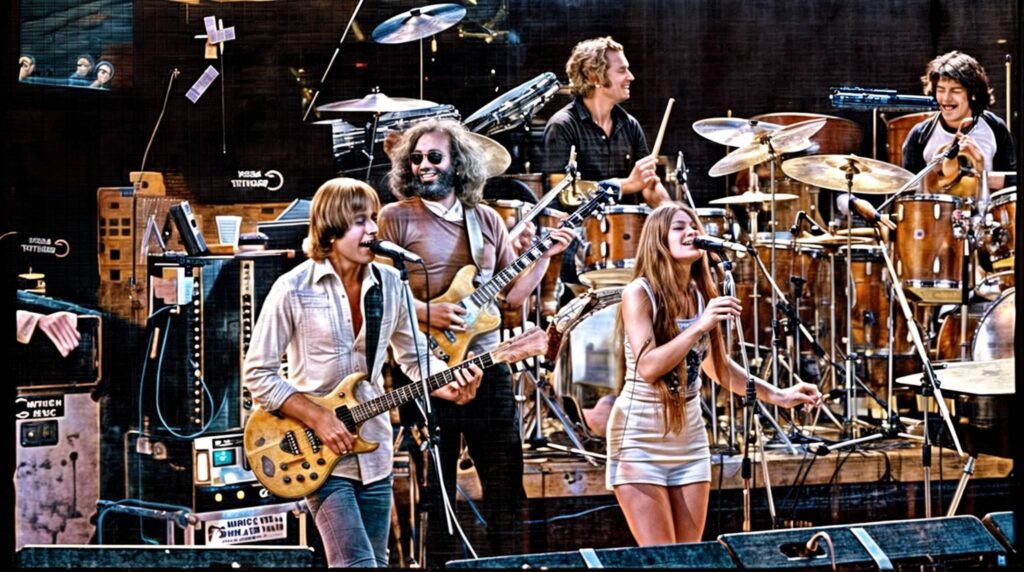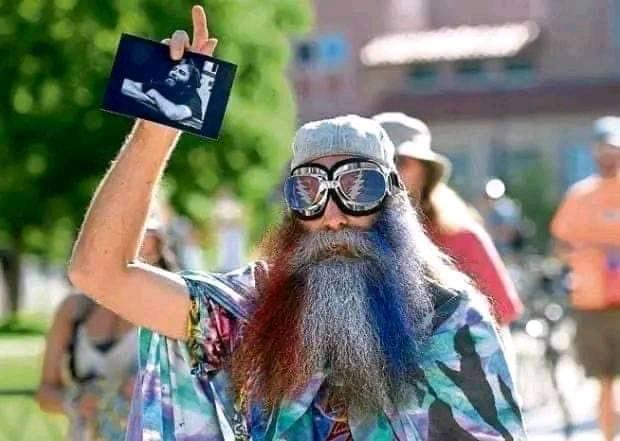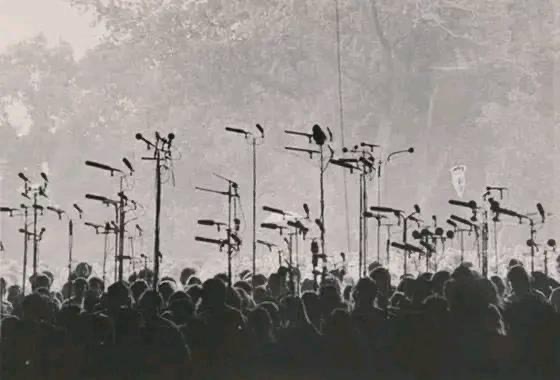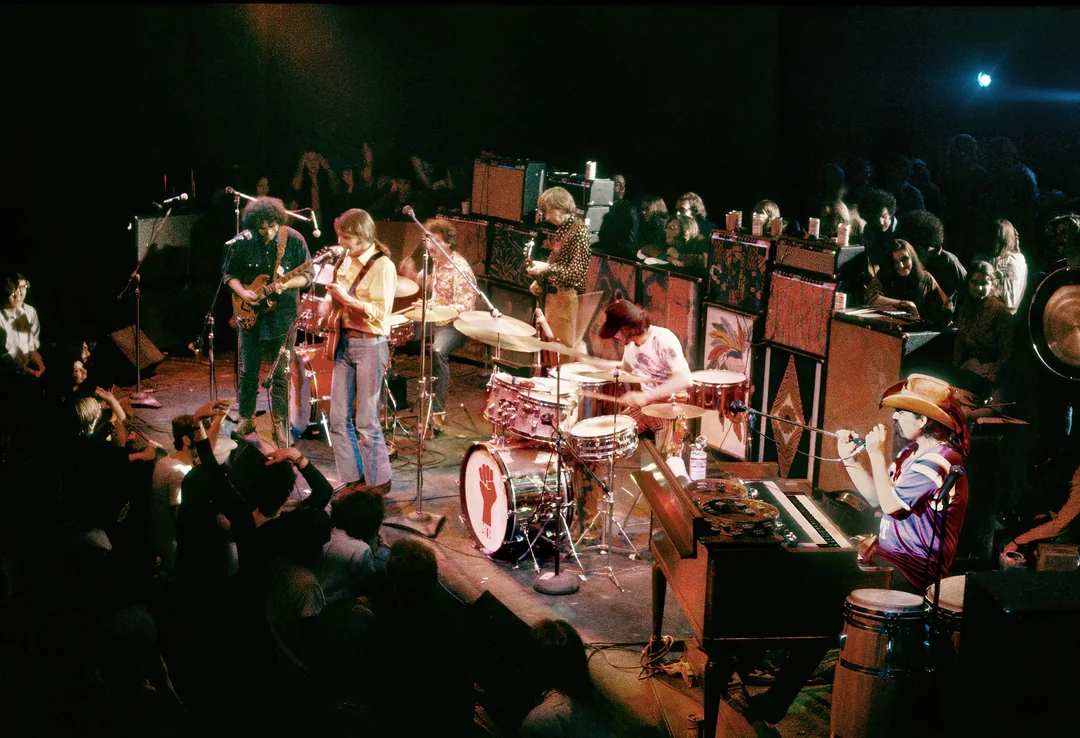
By Pat Christenson
Vegas Event Insider is a weekly blog covering the history and stories about the Las Vegas event industry.
A Grateful Dead Concert
“And now, for something completely different” -Monty Python

A Grateful Dead concert is a destination, communal experience from a band that was more conscious about their fans’ experiences than the precision of their music.
The original “jam band” performance grew out of many influences including rock, country, folk, blues, and bluegrass, but the performance was styled after the improvisational style of jazz.
Here are the critical elements of a Grateful Dead concert:
1. The Performance
Grateful Dead concerts were unique because of their deep connection with fans. Several aspects set these concerts apart:
- Improvisation: Each concert was unique due to the band’s extensive improvisational jams. They often played different versions of their songs, making every show a one-of-a-kind experience.
- Audience Participation: Deadheads were known for their enthusiastic participation. The band and fans shared a symbiotic relationship, with the audience’s energy fueling the band’s performances.
- Setlists and Song Choices: The band was known for rarely playing the same setlist twice, often incorporating requests and spontaneous choices, which made each concert unpredictable and exciting.
- Community and Culture: The concerts became a gathering place for a vibrant community, fostering a sense of belonging and shared experience among fans.
“I can get behind falling to pieces before an audience sometimes. We’re not performers; we are who we are in those moments in front of the public, and that’s not always when we’re at our peak.” -Jerry Garcia

2. Deadheads
A “Deadhead” is a devoted fan of the Grateful Dead. These fans were important to the band’s success for a few reasons. First, Deadheads followed the band on tour, creating a loyal and supportive community that helped spread the band’s music and reputation. Second, their dedication helped create a vibrant concert experience and atmosphere, encouraging the band to experiment and improvise during live performances. Finally, Deadheads were known for their strong sense of community and shared culture, which played a crucial role in maintaining the band’s legacy and influence. Their passion and loyalty helped sustain the Grateful Dead’s popularity for decades.


Explore the modern saga of concert bands, venues, promoters, and marketers in Pat Christenson’s book ‘Rock Vegas: Live Music Explodes in the Neon Desert,’ showcasing over 35 years and 500 live-music events.
3. Drumz
From the early ’70s, their two-set show changed nightly. In the ’80s, the second set always featured what they called “Drumz,” the prolonged drum solo, followed by an extended improvisational “space jam” with the rest of the band. For multiple-night gigs, the varied setlist allowed the band to rotate songs every three to four shows.

4. The Wall of Sound
The “Wall of Sound” was a groundbreaking audio system created for the Grateful Dead in the early 1970s. It was designed to deliver higher-quality sound to larger audiences.
What made it unique was its scale and complexity: it was one of the first sound systems that used many individual speakers to create a highly detailed and immersive audio experience. The system was designed to minimize distortion and allow each instrument and vocal to be heard clearly, even at high volumes.
The Wall of Sound was innovative for its time and had a significant influence on the development of live sound reinforcement technology.

5. Recording Dead Concerts
At a time when Van’s record companies and concert venues prohibited the recording and bootlegging of concerts, the Dead allowed fans to record their shows and trade tapes with each other. In the fall of 1984 that went beyond tacit approval with a special section for tapers.
The Grateful Dead allowed fans to record their shows for a few key reasons:
- Community Building: The band valued their community of fans, known as “Deadheads.” Allowing recordings helped foster a sense of connection and shared experience among fans.
- Promoting the Music: By permitting recordings, the Grateful Dead’s music reached a wider audience. Fans would share tapes, spreading the band’s music far beyond the concert venues.
- Authentic Experience: The band believed in the authenticity of live performances. By allowing recordings, they ensured that fans could experience the concerts even if they couldn’t attend in person.
Overall, this practice was a unique way for the Grateful Dead to build a loyal and engaged community around their music.
6. Touch of Grey
“Touch of Grey” had a significant impact on the Grateful Dead’s career and live performances. Released in 1987, it became their first and only Top 10 hit, bringing them mainstream success. This song introduced the Grateful Dead to a broader audience, attracting new fans and revitalizing their career.
In live performances, “Touch of Grey” served as a symbol of resilience and optimism. It also highlighted the band’s ability to evolve and adapt while maintaining their unique sound and message.
7. Deadhead Fan Club
The Grateful Dead’s fan club, known as the “DeadHead” fan club, provided a way for dedicated fans to buy tickets before they went on sale to the general public. This had several significant impacts on the concert experience:
- Building Loyalty: It helped strengthen the bond between the band and their most dedicated fans, rewarding their loyalty with early access.
- Fair Distribution: It allowed passionate fans a better chance to attend shows, especially given the high demand for tickets.
- Community Feeling: It fostered a sense of community and inclusiveness among fans, making them feel valued and part of the band’s journey.
The fan club ticketing system was a way for the Grateful Dead to nurture their loyal fanbase and maintain a close connection.
8. Jerry Garcia and Bobby Weir
Bobby Weir and Jerry Garcia brought unique and complementary personalities to the Grateful Dead, which played a huge role in shaping the band’s dynamic.
Jerry Garcia, the band’s central figure, was deeply introspective, reflective, and spiritual. He had an effortless ability to connect emotionally with his audience. Garcia’s creativity and vision made him the heart of the band, but his more reserved, contemplative personality also made him a figure that kept the band grounded in their artistic journey.
On the other hand, Bobby Weir brought a more energetic, spontaneous vibe to the group. His personality was more extroverted, and his guitar style was often a bit more rhythm-driven and percussive. His vocals often had a raw, passionate quality that complemented Garcia’s smooth, more subdued tone.
Garcia’s introspective depth provided a soulful, thought-provoking element, while Weir’s outgoing, experimental nature injected a sense of unpredictability and excitement. This synergy gave the Grateful Dead that distinctive, magical vibe that fans adored.

9. Shakedown Street
Shakedown Street” at Grateful Dead concerts evolved organically over time. It started as a makeshift marketplace where fans would gather before and after shows to sell, trade, or share goods like food, crafts, and memorabilia. Over the years, this informal gathering grew into a vibrant, traveling market known as “Shakedown Street,” named after the song of the same name by the Grateful Dead.
The spirit of Shakedown Street reflects the community and freedom of the Grateful Dead’s culture, where fans could connect, share, and celebrate their love for the music and the band. It became an iconic part of the Grateful Dead concert experience.
Coming Next Week:
Venues That Shaped the Grateful Dead: Ice Palace and Aladdin
Keep up with Vegas Event Insider:
Past Blogs:
Enjoy learning about the Grateful Dead? Subscribe to get our blogs straight to your inbox!
Liking our blog? Follow us on Instagram for more Las Vegas and Grateful Dead history!




